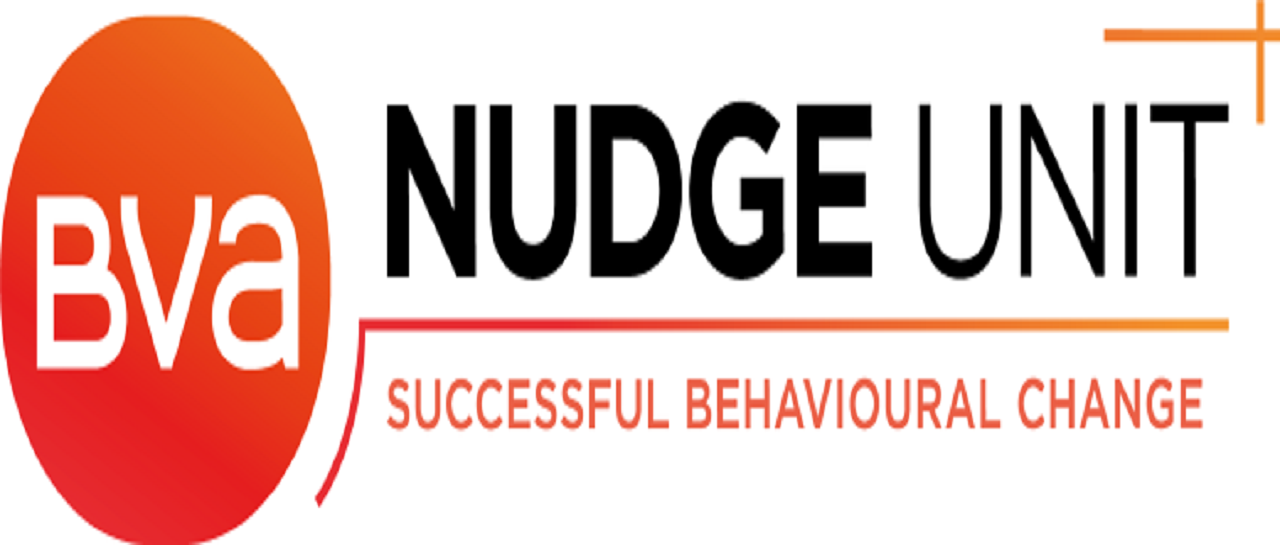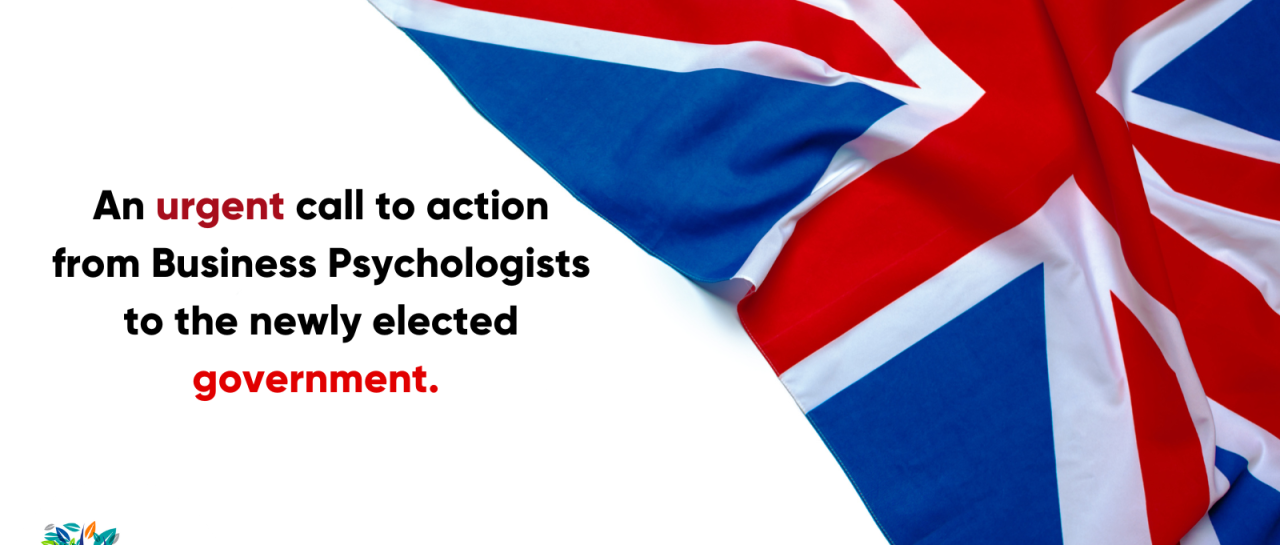Authored by Certified Business Psychologist Laura Howard. Certified Business Psychologist, Laura Howard, reflects on the webinar she recently delivered to ABP members. Below she outlines the main findings of her published research uncovering systematic barriers women face when being authentic as leaders. Importantly, she gives…

If you are in business, you are in the business of influencing behaviour. However, there is insufficient understanding about what really changes behaviour, argued Richard Chataway, Vice President of the BVA Nudge Unit, at the May webinar hosted by the ABP. Unfortunately many organisations pay lip service to this issue by thinking that by changing perception behaviour change will follow. In the vast majority of cases this never happens, as Richard powerfully demonstrates in his new book “The Behaviour Business”, which provides numerous examples of mistakes, missed opportunities and successful implementation of behaviour orientated solutions.
Richard drew on the vast amount of experience gained in the fastest consumer markets in the world, in the UK, USA and Australia, to explain in clear terms how behavioural science can make a difference to business performance, highlighting the four key areas which the Unit is focused on:
* Addressing management challenges (safety, diversity, collaboration etc.)
* Enhancing customer experiences
* Improving digital adoption and conversion
* Optimising communication
But all these require an acknowledgement that presenting information is not enough: organisatons rarely allocate sufficient time and resources to spend on science, testing, learning and optimising processes so that we can truly understand the drivers of behaviour in particular sectors.
Much of the evidence of what works derives from Nobel Prize winner Kahneman’s analysis and theory of the existence of two systems. System 1 is fast, instinctive and emotional, whereas system 2 is deliberate, slower and rational. The results of years of research demonstrated that the brain defaults initially to system 1, reflecting emotion and survival instincts, as demonstrated by the lazy and unimaginative Homer Simpson, unlike the completely rational Dr. Spock in the TV series “Startrek”, who operates under System 2.
It has been evidenced for years that people will be lazy and will not change their behaviour unless there is an easy and meaningful way to do it with choice being simplified or even eliminated. Examples abound:
* Despite posting notices, cleaning costs in gents facilities at Schipol Airport were reduced by 80% by a simple redesign aimed at influencing care and behaviour. This example bears out the conclusions of another Nobel Prize winner, Richard Thaler of Chicago, and the father of the development of Nudge Theory, whose three words sum up his life’s work, MAKE IT EASY, of course in a cognitive context. How you say it is more important than What you say.
* An example which clearly illustrates how behaviour can be influenced is over the matter of banks moving from cheques to direct payments. Changing a notice from “Using less paper and saving a trip to the bank” to “Receiving funds directly so you don’t miss out” had a huge impact on people’s willingness to reduce cheque use. What made the difference was that was more positive and leveraged System 1.
* An example of how nudging of behaviour made a difference was the Australian anti-smoking campaign and the use of bespoke App called “MyQuitBuddy”. Testing resulted in the conclusion that a staged and user friendly approach would be the most effective so the name was made even friendlier by using the strapline that “We are with you every step of the way”. But what was critical with this campaign was that it made the process of giving up easy and the emotional push back was minimised.
What these examples show is that
- Test and optimise to ensure that the desired behaviour hooks on to System 1 so as to produce the desired outcome
- Technology works, so long as it is not hard to use and can with little effort be made to be intuitive
Reverting to banks, the 100% digital Neobanks are chipping away at the user base of traditional banks to the extent that the latter are trying to build up and emulate the activities of the upstarts. The traditional banks are however failing to the extent that they have not addressed the “Easy to Use” watchwords as attentively as the neobanks, which are not only providing an easier and reliable service but are also exploiting the communications gap, through use of more sophisticated techniques such as the use of Net Promoter Scores (NPS), which cleverly nudge the grains of behaviour.
A bank looked to improve the uptake of its credit card. A simple action to move the button to a more eye catching and engaging position was all that was required.
Use of simplicity can be a powerful tool. Amazon, Netflix and Google have refined their business models to incorporate this approach and have seen off competition over the years, even though competition had previously been well established, Anyone remember AskJeeves and MySpace? Google has to be singled out however for its level of testing and attention to detail in winning and maintaining its market share: it tested 40 different pantones of blue before deciding which would be the most effective and its simplicity in its search box has only been compromised by the “I’m feeling lucky” alternative, which, while costing it $100 million to maintain in terms of lost revenue, makes users feel that they there is some degree of human choice in what is otherwise a purely functional activity. Yet again, this appeals to System 1. The ultimate in attention to tested detail from a marketing perspective has ensured success.
In its launch of Prime, Amazon has tapped into the concept of people being willing to pay a premium for the simplicity of free delivery. Not only have they raked in a subscription but they have boosted their revenue per subscriber by 80%.
Rory Sutherland likes to boil this approach down to an attitude of mind in differentiating methodologies: competitors all do experiments, the successful ones just do things slightly differently. Amazon has done it slightly differently.
Consumer behaviour is however given far more attention than employee and human behaviour in the workplace. Relatively few resources have been channelled in this direction in the case of Amazon. The changing nature of work and human relevance in the workplace is becoming a major issue in the context of AI and machine learning, and the Office for National Statistics (ONS) has produced a list of those jobs most at risk of automation. In summary, those jobs with “Psychological” content, such as nursing, care, the medical profession and education are least at risk.
However, those at the forefront of automation are subject to rapid change and in some cases are vulnerable to exploitation. Much work has still to be done in the area of helping employees adapt and retrain so that automation can be embraced. Organisations need to improve at flushing out what is important and how they can maximise the use of human capital and talent in the workplace.
Work by James Bloodworth, escapsulated in his book “Hired”, highlights a spell working undercover in low wage Britain and worked in a number of psychologically stressful working environments. He exposes the dark side of Amazon for the harsh treatment of employees. What this highlights is that most employees are happy to embrace change when included positively but organisations such as Amazon need to understand that a lack of resources towards engagement and a failure to address the issue of human behaviour in the workplace results in poor performance, low morale and workplace productivity, all of which impact the bottom line. To make matters worse, they made other mistakes, for example a streamlining of the CV form designed to recruit a certain kind of corporate employee backfired and resulted in a magnified bias in recruitment.
Tottenham Hotspur Football Club rejected Harry Kane as a junior because he was too small and didn’t meet speed criteria in trials. No one at that stage thought to investigate his accuracy, attention to detail and his ability to score goals which of course what football is all about.
Professor Cass Sunstein, visiting professor of Psychological and Behavioural Science at LSE and collaborator of Professor Thaler, has demonstrated in his work that actions should be less intuitive and more evidenced based and that the matching of overall business environment and organisational culture should be given a greater focus, reflecting “Psychological Safety”.
There is often an inverse relationship between the wrong kind of formal training and positive outcomes. However, if training is focused on product or service delivery and this is linked to goals and objectives and appropriate use of technology, large increases in efficiency can be obtained. An interesting way to view this is to view human reactions as test tube behaviours:
- Use the existing (behavioural) science
– Evidence not intuitions
- Recognise the relative strengths of humans vs robots/algorithms/AI
– Empathy versus certainty
- Use actual data on behaviour – not modelled
– Randomised Control Trials are NOT essential
- Test, learn, optimise
– To build new hypotheses
– And to deliver marginal gains as part of agile processes
None of the success stories just happen. It can take time, persistence and resources. However, successful business is about experimentation to understand behaviours, whether they be customer or resource orientated. Behavioural Business is the future of Business and it demands our undivided attention. To quote Richard
Experimentation, not technological innovation, distinguishes the most successful 21st century businesses. The world of work is changing in ways that make becoming a behavioural business is not just advantageous – but essential
‘The Behaviour Business’, by Richard Chataway is out now!
- Get 25% off using code “HH2020” at
- https://harriman-house.com/behaviourbusiness
View the slide deck from this session here.
RT
19 May 20



